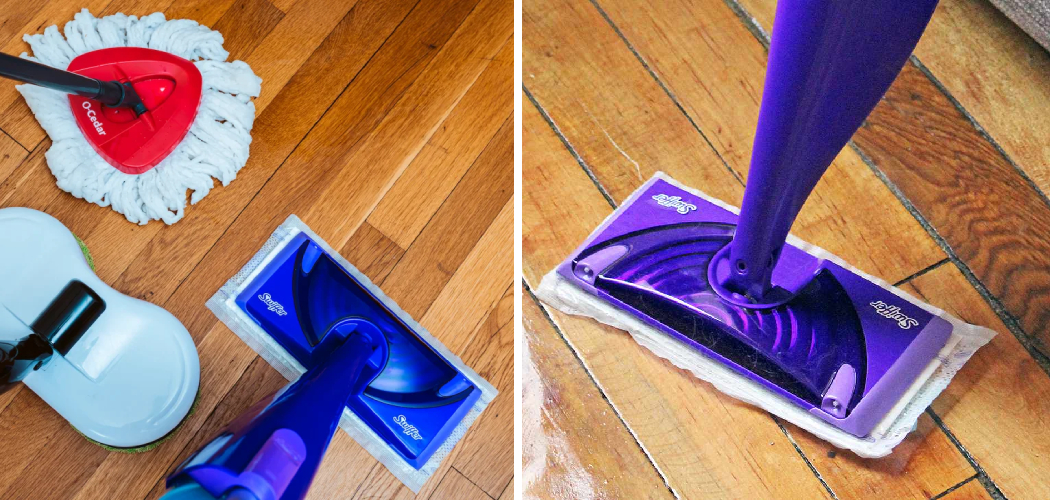Have you recently cleaned your floors with a Swiffer, but can’t seem to eliminate all the residue left behind? Don’t worry – we’ve all been there! Whether it be from dust and debris that accumulates on surfaces or old wax buildup, getting rid of these stubborn deposits is not always easy.
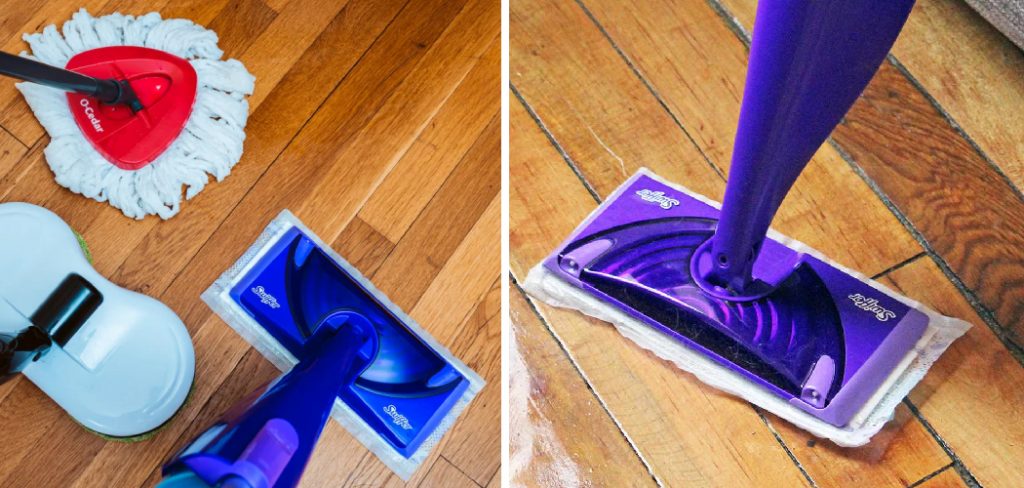
Thankfully, this blog post will explore how to remove Swiffer residue from your floors so they look polished and clean once again. From tools to know about and types of cleaners to use for specific surface residues, by the end, you should have no problem successfully eliminating leftover bits from your mop pad. So keep reading and discover how simple it truly is to eradicate pesky residual particles in a snap!
Tools and Materials You Will Need to Remove Swiffer Residue
- A bucket
- Warm water
- White vinegar (or preferred all-purpose cleaner)
- Microfiber cloth or mop
- Scrub brush
Step-by-step Guidelines on How to Remove Swiffer Residue
Step 1: Prepare Your Cleaning Solution
Fill your bucket with warm water and add either a quarter cup of white vinegar or an all-purpose cleaner. Vinegar is our recommended choice, as it is natural, inexpensive, and effective at breaking down tough residue. Stir the solution until it’s well mixed. Preparing your cleaning solution beforehand will save you time later on.
Step 2: Soak Your Mop Pad
Dip your microfiber cloth or mop into the prepared cleaning solution and soak it thoroughly. This step is crucial because if your mop pad isn’t wet enough, it won’t be able to pick up residue properly. You can also run your mop under warm water to ensure it’s fully saturated. If you’re using a microfiber cloth, don’t wring it out.
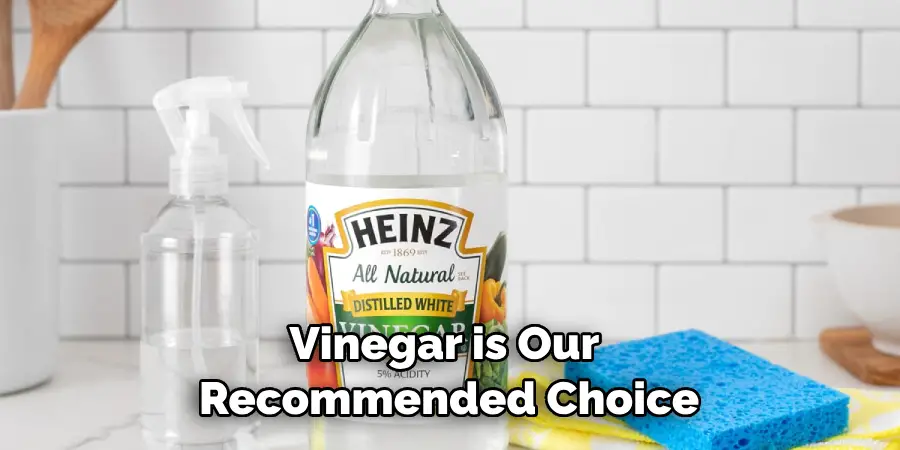
Step 3: Scrub Away Residue
Using your scrub brush, start gently scrubbing the affected area with the cleaning solution-soaked mop pad. For tougher spots, you may need to apply more pressure and continue scrubbing until all of the residue has been removed. Make sure to rinse the pad often to prevent it from becoming too caked with residue.
Step 4: Rinse and Dry
After scrubbing, use clean water to rinse off any remaining residue and cleaning solution. You can also use a clean microfiber cloth or mop to wipe away the excess water. Once the surface is dry, inspect it closely for any leftover residue. If there are still some stubborn spots, repeat the process until the area is completely clean.
Following these steps will help you easily remove Swiffer residue from your floors without any hassle. However, it’s essential to keep in mind that the type of surface and the amount of residue will determine how thorough you need to be with scrubbing. For instance, if there is a significant amount of buildup or the surface is sensitive, it may take multiple tries to achieve the desired results.
Additional Tips and Tricks to Remove Swiffer Residue
- Use a damp cloth or sponge to wipe away the residue. Make sure to wring out excess water before wiping.
- Mix equal parts white vinegar and water in a spray bottle and spray onto the residue. Let it sit for several minutes, then wipe away with a cloth.
- For tougher residue, use a plastic putty knife to gently scrape it off. Be careful not to scratch the surface underneath.
- If the residue is on a floor, use a mop and hot water to remove it. You can also add a few drops of dish soap for extra cleaning power.
- Another option is to use rubbing alcohol to break down the residue. Apply it directly onto the affected area and let it sit for a few minutes before wiping it away.
- To prevent residue buildup in the first place, try using a microfiber cloth to clean your floors instead of a Swiffer. Microfiber cloths can effectively pick up dust and dirt without leaving behind any residue.
- Consider using alternative cleaning products such as natural cleaners or homemade solutions to avoid harsh chemicals that can contribute to residue buildup.
- Regularly sweep or vacuum your floors before mopping to minimize the amount of dirt and debris that can contribute to residue buildup.
- If you have hardwood floors, avoid using excessive amounts of water when cleaning as it can damage the wood and leave behind residue.
- Lastly, always make sure to properly dispose of used Swiffer pads to prevent any residue from transferring onto surfaces in your home.
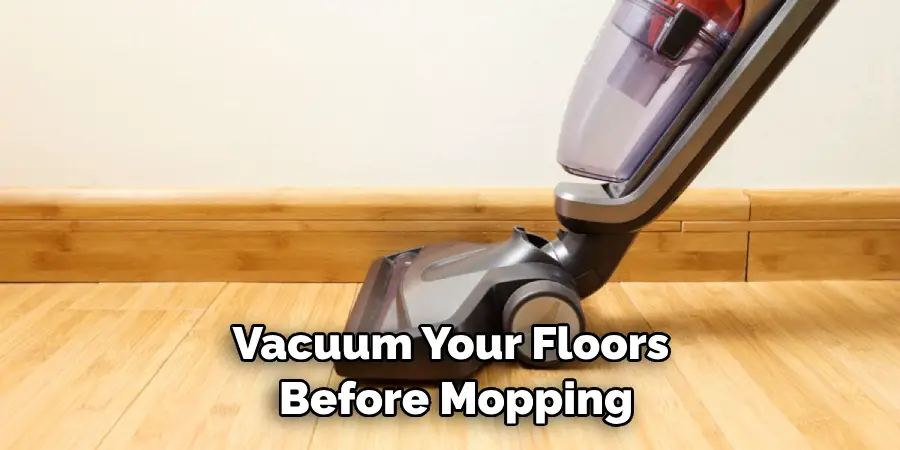
Remember to always test any cleaning solution on a small, inconspicuous area before using it on the entire surface to avoid potential damage. With these tips and tricks, you can effectively remove Swiffer residue and keep your floors looking clean and shiny. Happy cleaning!
Things You Should Consider to Remove Swiffer Residue
1. Check the type of flooring you have. Depending on the type of flooring in your home, certain cleaning methods may work better than others. For example, hardwood floors may require a different approach compared to tile or vinyl floors. This is important to keep in mind when trying to remove Swiffer residue.
2. Understand the ingredients in your cleaning solution. Some cleaning solutions, especially those designed for hardwood floors, may contain oils or waxes that can leave a residue on your floors. Make sure to check the ingredients list and use a cleaner specifically formulated for your type of flooring.
3. Use hot water and a microfiber cloth. Hot water can help dissolve the residue left behind by Swiffer cleaning products, making it easier to wipe away. Using a microfiber cloth can also help pick up any remaining residue without leaving behind any fibers or particles.
4. Avoid using harsh chemicals or abrasive materials. These can potentially damage your floors or leave scratches while trying to remove the residue. Stick to gentle cleaning solutions and materials to avoid causing any further damage.
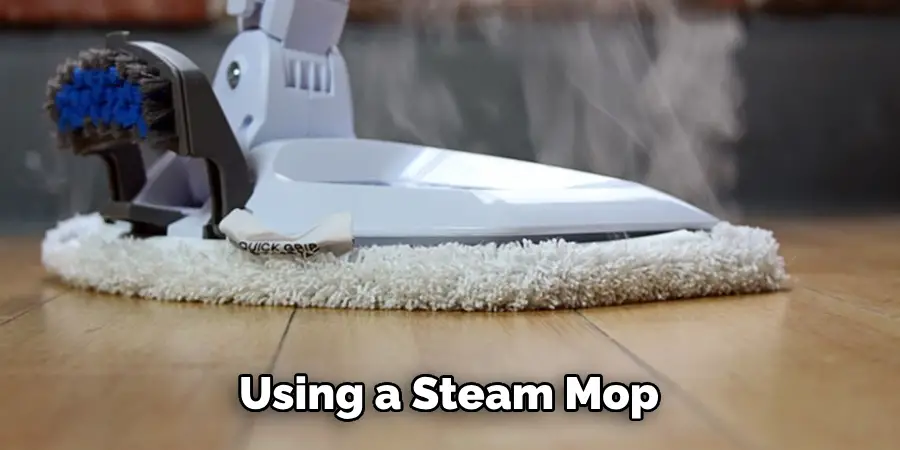
5. Consider using a steam mop. Steam mops use high heat and water vapor to clean floors, making them an effective tool for removing residue. Just make sure to follow the manufacturer’s instructions and precautions when using it on your specific type of flooring.
6. Rinse with plain water afterward. After using any cleaning solution or method to remove Swiffer residue, make sure to rinse the area with plain water. This will help remove any remaining residue and prevent build-up in the future.
7. Use a vinegar solution for particularly stubborn residue. If the above methods are not effective, you can try using a mixture of equal parts white vinegar and water. Apply it to the affected area and let it sit for a few minutes before wiping it away with a clean cloth.
8. Consider using a commercial residue remover. If all else fails, there are specific products designed to remove residue from floors. Just make sure to follow the instructions carefully and test on a small, inconspicuous area first.
Following these considerations should help you effectively remove Swiffer residue from your floors. Remember to always read and follow the instructions on cleaning products and use caution when trying new methods on your flooring.
Frequently Asked Questions
What is Swiffer Residue?
Swiffer residue refers to the thin film or build-up left behind after using a Swiffer product. This can be seen on surfaces such as hardwood floors, laminate flooring, and other hard surfaces. It is often a result of using too much cleaning solution or not properly wiping up the excess liquid during the cleaning process.
Why is it important to remove Swiffer residue?
If left unaddressed, Swiffer residue can lead to a dull or cloudy appearance on your floors and surfaces. It can also attract more dirt and dust, making your cleaning efforts less effective over time. Additionally, if the residue is not removed from hardwood floors, it can potentially damage the wood finish.
Are there any products specifically designed for removing Swiffer residue?
Yes, there are products on the market that are specifically formulated for removing Swiffer residue. These include floor cleaners, floor polish removers, and all-purpose cleaners. It is important to read the instructions carefully and test these products in an inconspicuous area first, as some may be too harsh for certain surfaces.
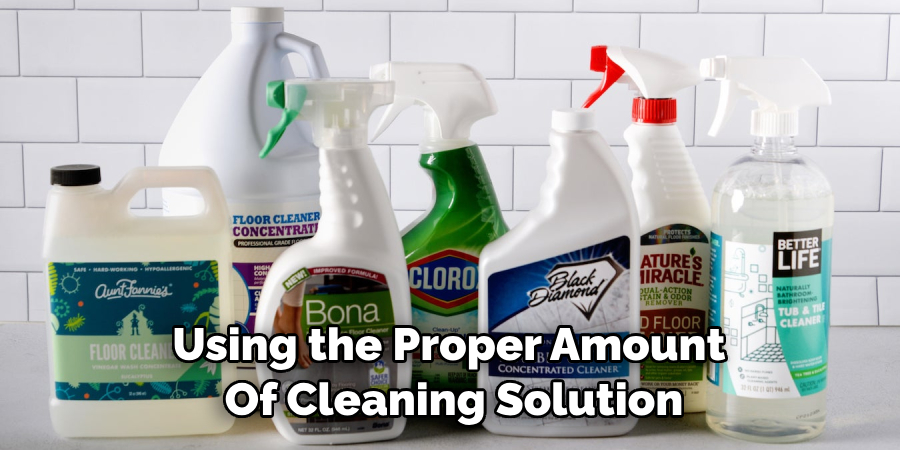
Can I prevent Swiffer residue from occurring in the first place?
Yes, there are steps you can take to prevent or minimize Swiffer residue. First, make sure you are using the proper amount of cleaning solution and not oversaturating the floor or surface. You can also try using a damp mop or cloth to remove excess liquid after cleaning. Additionally, regularly changing the cleaning pads on your Swiffer can also help prevent residue build-up.
Conclusion
With the above outlined you can easily understand how to remove swiffer residue. Always remember to follow instructions carefully when using cleaning products and take preventative measures to avoid residue build-up in the first place. By keeping your floors and surfaces clean, you can maintain a shiny and streak-free appearance for longer periods of time. Happy cleaning!

